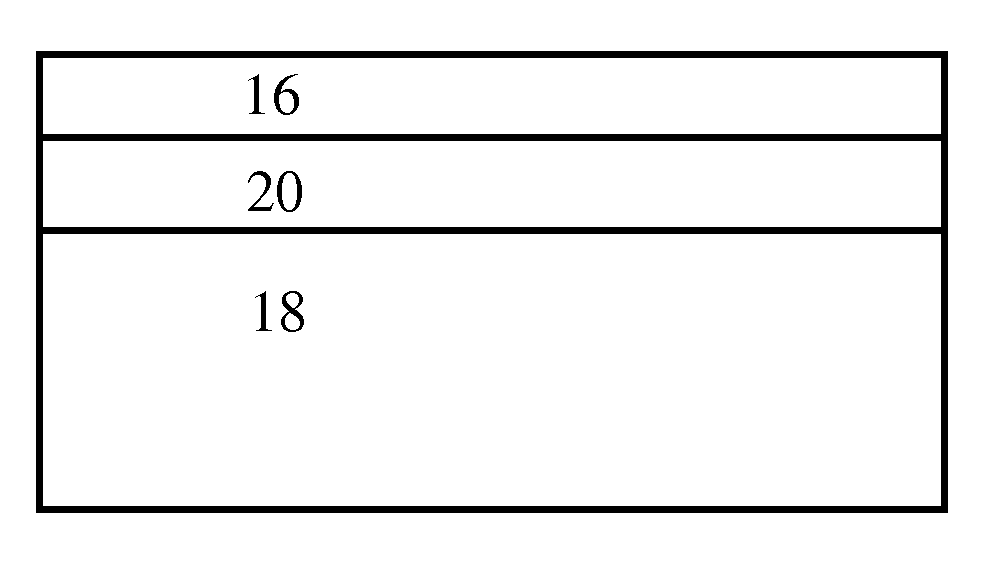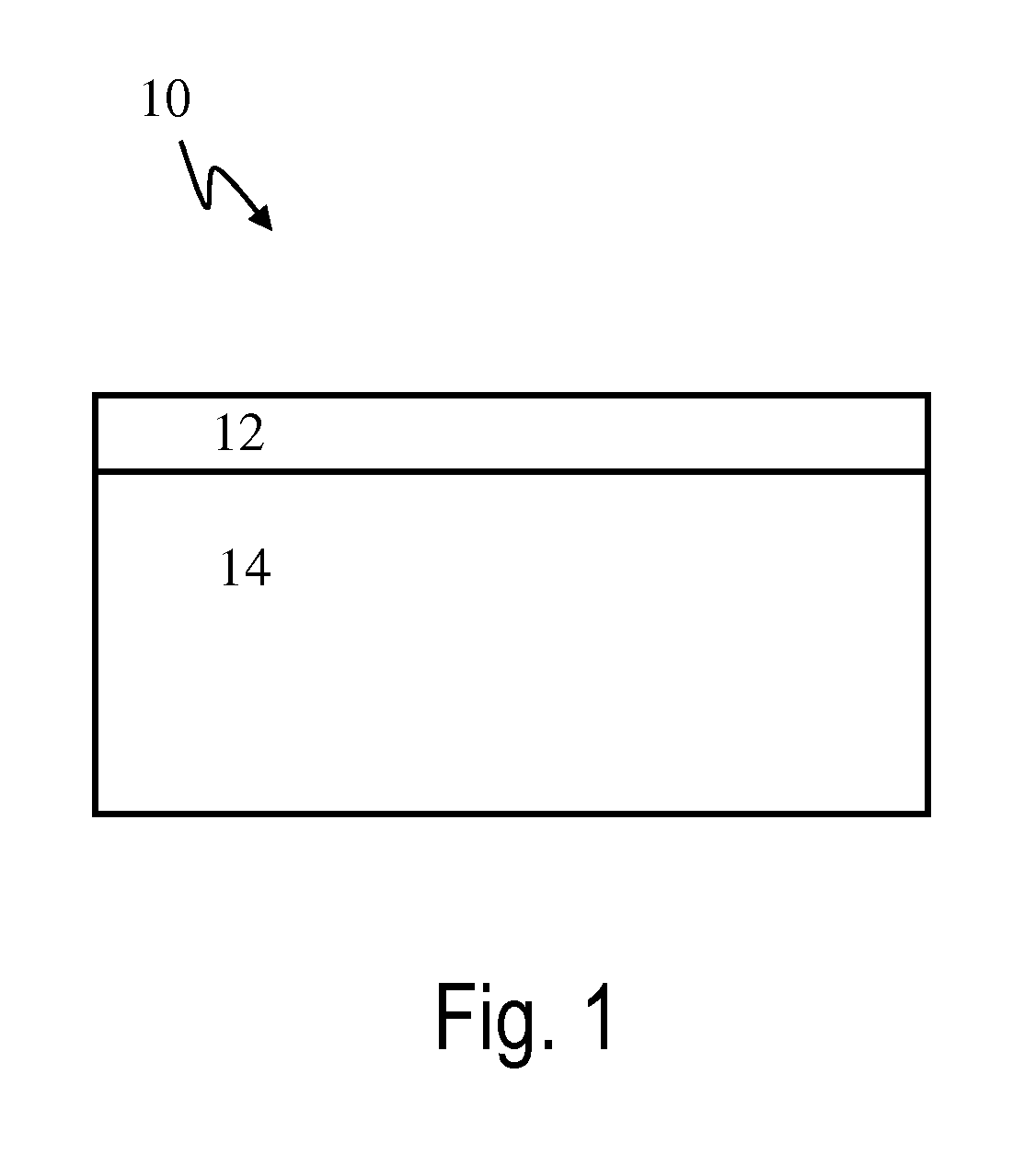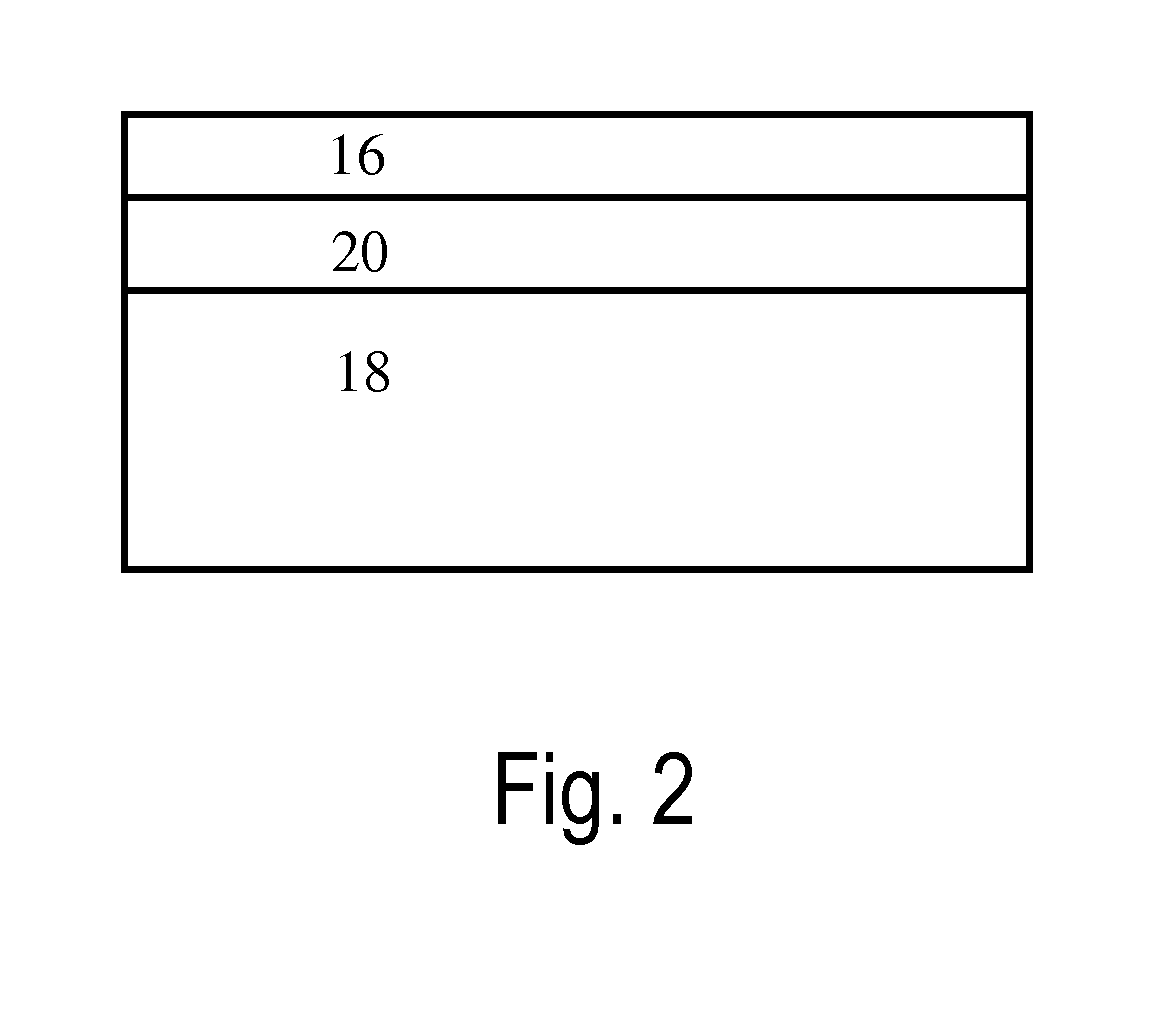Interlayer with nonuniform solar absorber
- Summary
- Abstract
- Description
- Claims
- Application Information
AI Technical Summary
Benefits of technology
Problems solved by technology
Method used
Image
Examples
example 1
[0078]A dispersion of Cs0.33WO3 (CWO) nanoparticle in triethylene glycol di-(2-ethylhexanoate) is diluted and mixed with triethylene glycol di-(2-ethylhexanoate), blended with polyvinyl butyrate resin, and extruded to form a 0.76 millimeter thick sheet with a gradient band approximately 29.21 centimeters (11.5″) wide along one edge of the sheet. The CWO dispersion is added to yield 0.06% CWO nanoparticles in the non-gradient band region of the sheet. The gradient band contained 0% CWO and is formed using a second melt stream and a coextrusion probe that extends into the main melt stream.
[0079]This interlayer is laminated between a layer of clear glass and a layer of tinted glass. The resulting laminate has a visible transmittance of 74.0% in the non-gradient region and 77.8% in the gradient band. The transmission at 880 nanometers in the non-gradient region is 19.6% and 38.6% in the gradient region. The transmission spectra are shown in FIG. 4.
example 2
[0080]An interlayer is formed as in Example 1 with 0.14% CWO in the non-gradient region and 0.06% CWO in the gradient portion. The visible transmission in the vision portion of the laminate is 73.4% and 80.1% in the gradient portion. The transmission at 880 nanometers in the vision portion is 13.1% and the transmission at 880 nanometers in the gradient portion is 28.6%.
[0081]The transmission spectra are shown in FIG. 5.
[0082]By virtue of the present invention, it is now possible to provide interlayers, such as a poly(vinyl butyral) layer, having a nonuniform distribution of infrared absorbing agent that allows for the transmission of desirable infrared signals.
[0083]While the invention has been described with reference to exemplary embodiments, it will be understood by those skilled in the art that various changes may be made and equivalents may be substituted for elements thereof without departing from the scope of the invention. In addition, many modifications may be made to adapt...
PUM
| Property | Measurement | Unit |
|---|---|---|
| Fraction | aaaaa | aaaaa |
| Fraction | aaaaa | aaaaa |
| Fraction | aaaaa | aaaaa |
Abstract
Description
Claims
Application Information
 Login to View More
Login to View More - R&D
- Intellectual Property
- Life Sciences
- Materials
- Tech Scout
- Unparalleled Data Quality
- Higher Quality Content
- 60% Fewer Hallucinations
Browse by: Latest US Patents, China's latest patents, Technical Efficacy Thesaurus, Application Domain, Technology Topic, Popular Technical Reports.
© 2025 PatSnap. All rights reserved.Legal|Privacy policy|Modern Slavery Act Transparency Statement|Sitemap|About US| Contact US: help@patsnap.com



